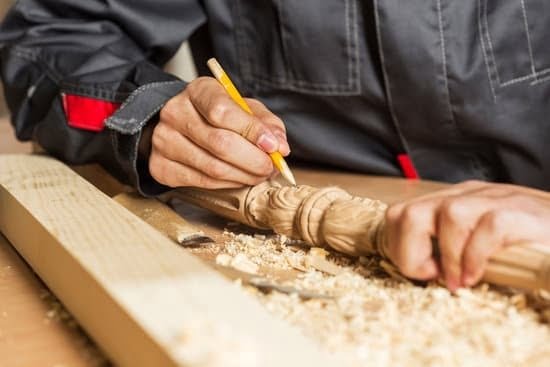Introduction
Self-Made Woodworking Tools can be extremely beneficial to a woodworker, as they are made with the specific intent of a specific task in mind. Not only do self-made tools provide flexibility and customized control of projects, they allow creativity and resourcefulness to flourish. They can also save money by eliminating the need for commercial produced tools that can be an expensive investment. Self-made woodworking tools can range from something as simple as make-shift jigs or fixtures to more complex designs such as stationary power tools with customized features. By utilizing resources already available, such as scrap lumber, recycled materials and power tools, any aspiring woodworker can create precise and efficient tools for any purpose. With this knowledge, a seasoned craftsman can explore the endless possibilities in design and creation that come with self-made woodworking tools.
Essential Woodworking Tools
Other Essential Woodworking Tools:
• Saw horses: A crucial addition to any woodworking shop, saw horses provide a stable and elevated platform for working on.
• Tape measure: An essential tool for accurately measuring wood pieces of varying sizes.
• Hand chisel set: For shaping, forming and manipulating materials that cannot be done with other tools.
• Cabinet scraper: For making subtle finishing cuts and getting into tight spaces.
• Router: To give projects more detailed depth.
• Drill press: For drilling perfect holes without having to manually brace a drill in your hands.
• Bench grinder: To sharpen bits, blades, chisels, and the like when they become dull or damaged after extensive use.
• Jointer/Planer Combo: To flatten boards or add details to edges
• Random orbit sander/belt sander combo: For smoothing rough surfaces or doing delicate sanding work on curved or angled pieces with ease.
• Table saw/circular saw combo: To make straight and accurate cuts along long lengths of board quickly and directly from the source material.
• Sandpaper/Sanding blocks & sponges : The ideal tool for removing layers of finish from tables, chairs & the like as well as smoothing joints between hardwood pieces without much effort.
• Bar clamps & clamp sets : Working hand in hand with glue in order to achieve optimal woodworking results faster than ever before.
Making Your Own Woodworking Tools
Creating templates is a great way to ensure accuracy when making your own woodworking tools. To create a template, first measure the dimensions of the workpiece that the tool will be used on. Choose a material for the template that is both rigid enough for accuracy and thin enough for the blade of the tool to pass through. Trace out your desired shape onto the template using a pencil. Next, secure your template in place with pins or clamps and proceed to cut along its outline with a handsaw or jigsaw. Once finished, your template should be ready to use as guidance while you shape your woodworking tool. You may also want to trace two opposite sides of the tool shape onto two separate templates and then accurately align them together both when cutting out as well as during use as this will help keep all angles uniform throughout construction and use of your custom made tool.
Strategies for Using Self Made Woodworking Tools
Safety should be a top priority when it comes to making and using self made woodworking tools. Not only could improper use of power tools cause serious injury, but the sharp edges and unfamiliar nature of self-made tools can create even greater risks. Be sure that all safety gear such as goggles, gloves, and masks are worn at all times while working with wood or self made woodworking tools. Keep your own workspace clean and organized to ensure there is no debris or clutter that can impair visibility or lead to accidents.
Before using any self made tool, make sure it is in proper working order and equipped for use. Check for frayed wires, loose screws, and looseness around moving areas of the device. Double check any changes you have made prior to using the tool from an operational standpoint as well.
Proper storage is also necessary. Keeping your self made woodworking tools in a dry place away from heat sources will help protect them from rust or warping over time due to exposure to temperature changes or moisture levels. Designate a safe spot where you can store your tools away from children who may play with the devices without supervision. Ensure all cords are properly stored away so they do not become tangled or fall onto the floor creating another accident hazard. Finally, store wooden scraps away from your workshop area so they don’t have an opportunity to create a potential fire hazard when combined with sawdust or other flammable materials easily found in a workshop space.
Conclusion
Constructing woodworking tools on your own can be an incredibly rewarding experience. That said, it’s important to ensure that you have the right resources if you plan to make these projects a successful one. Fortunately, many websites provide access to helpful instructions, materials and supplies needed for building your own unique tools.
Below are some helpful links to additional resources for woodworking and woodworking tools:
-Woodcraft Magazine: This print publication provides informative articles, reviews of popular woodworking tools, and project ideas every month.
-Fine Woodworking: A comprehensive online source for high-quality plans and advice from contributors around the world.
-eHow Home & Garden: An extensive guide full of step-by-step instructions for building your own DIY tools—including how to make clamps, saws, chisels, vises and more.
-Instructables: This community of DIY experts offers hundreds of free projects with detailed instructions on how to build all kinds of woodworking tools—from hand planes to routers.
-Wood Magazine Forum: An active message board where users can post questions regarding any aspect of their current or future toolbuilding projects—and get answers from experienced users in no time.

Hi everyone! I’m a woodworker and blogger, and this is my woodworking blog. In my blog, I share tips and tricks for woodworkers of all skill levels, as well as project ideas that you can try yourself.





